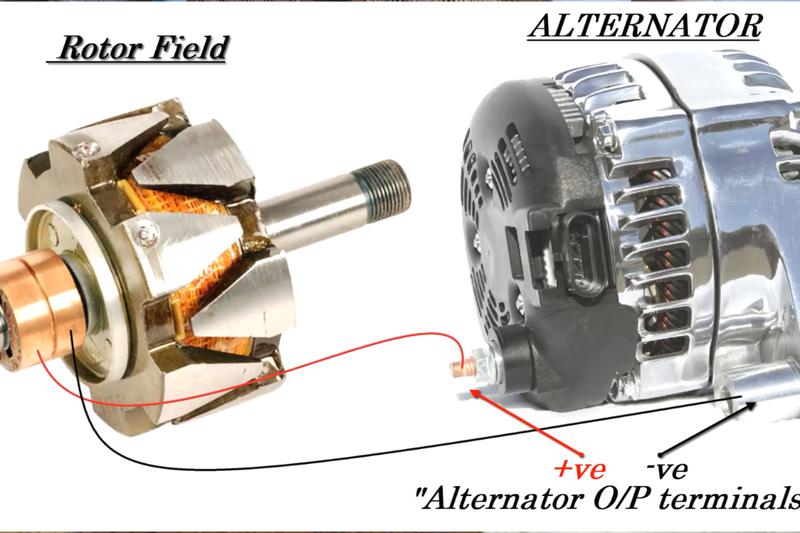An alternator is an electric generator in modern cars powers the electrical systems and charges the battery. As an electromechanical device, it converts the mechanical energy into alternating current (AC) for use.
The mechanical energy occurs as a result of the vehicle’s crankshaft rotation. The energy passes through the drive belt and pulley to the alternator and powers all components in your car.
To ensure the device keeps running efficiently, you should excite a car ford alternator. Exciting the alternator ensures it builds its voltage as it rotates and regulates it to the present set level. Exciting also provides the alternator with a magnetic current. Learn more on how to excite an alternator.
How to Excite a One Wire Alternator
One wire alternator is also known as the self-exciting alternator, meaning they spark themselves up.
What You Need
- An alternator
- A dc motor
- Pulley and belt
- Multi-meter
- Mobile charger
- Two laptop chargers
- Crocodile clips 12V bike headlamp bulb
- Wooden board 30X30 cm
- Vice
Check this too: Can a Car Run Without an Alternator?
- Carry out the mechanical connections first before doing the electrical ones.
- Connect a pulley to a 500W DC motor shaft, later take a wooden board and mount the motor on one side.
- Take a big vice and position it on the other side of the board. Use screws to mount the vice on the board and later the alternator on it.
- Using a pulley, connect the DC motor and alternator.
- Make the electrical connections. Connect the positive red wire brushes to the main positive terminal on the alternator, like shown in the diagram below. Later connect the negative blue or black terminal of the brush( from rotor field) to any part on the alternator since it’s at a ground negative.
- Get hold of a 5-volt mobile charger and attach its positive cable to the major positive terminal of the alternator. Connect its negative wire, which is black, to any part on the alternator.
- Use any mechanical rotating source, the DC motor, to rotate the alternator’s shaft. When the system gets in motion, disconnect the mobile charger, and you will have excited your alternator.

Exciting a 3 Wire Alternator
Exciting this alternator takes almost the same steps, but now for three wires, it has three terminals. These three wires include the positive wire, the voltage sensing, and the ignition input wire.
The voltage sensing wire links to the battery, and the ignition cable connects from the alternator to the key switch. By exciting the alternator, you correct the voltage at the alternator for it to operate correctly. This voltage should be roughly 2.5, with nothing running.
What is the Exciter Wire on an Alternator?
An exciter wire is the one that generates the voltage needed to keep the alternator functioning when you start the car. But in modern vehicles, the alternators have regulators, and most don’t require an exciter wire to function.
In an alternator that requires an exciter, if the wire is not working correctly, it won’t transmit the voltage, and the alternator fails to generate enough power. This failure of the alternator affects the vehicle’s battery with time, and other accessories stop working.
How Many Volts Does it Take to Excite a Car Alternator?
Exciting a car alternator requires 13.8 volts DC for a maximum voltage of 12v ignition system. The maximum output of your alternator ranges between 14.1- and 14.4-volts DC after regulation. The voltage regulator supplies power to the battery when it’s at the nominal level. So, a charged battery will measure over 14 volts and stay steady.
Check this too: How Long Does An Alternator Last
Conclusion
Information is power; that’s why you should understand all alternator’s details. You should learn how to excite the alternator and how it operates, whether one wire or three-wire. If you remove the alternator from the vehicle or replace it with another one, always polarize an alternator before reinstalling. When you can’t handle some maintenance practices consult a technician.
